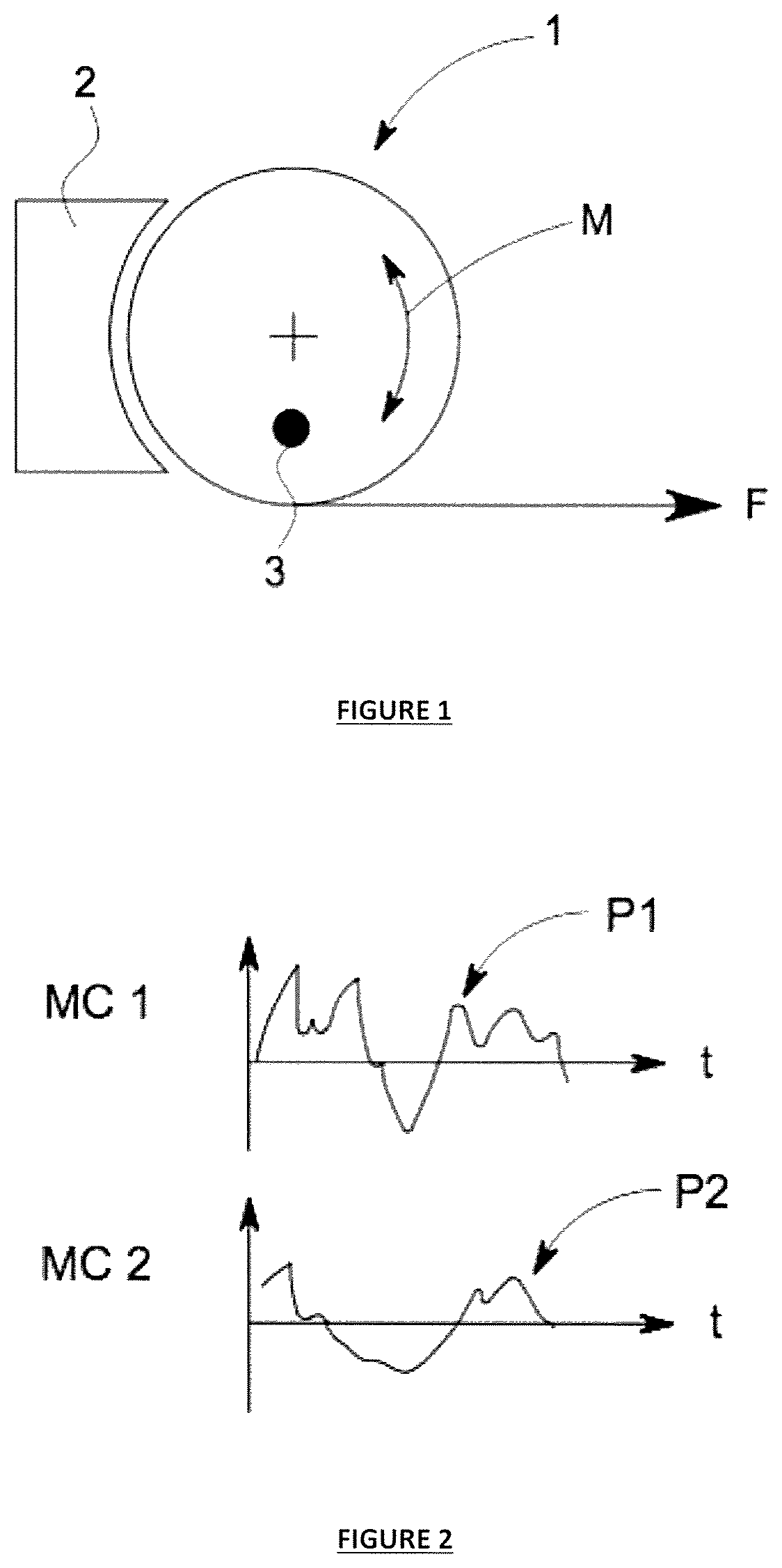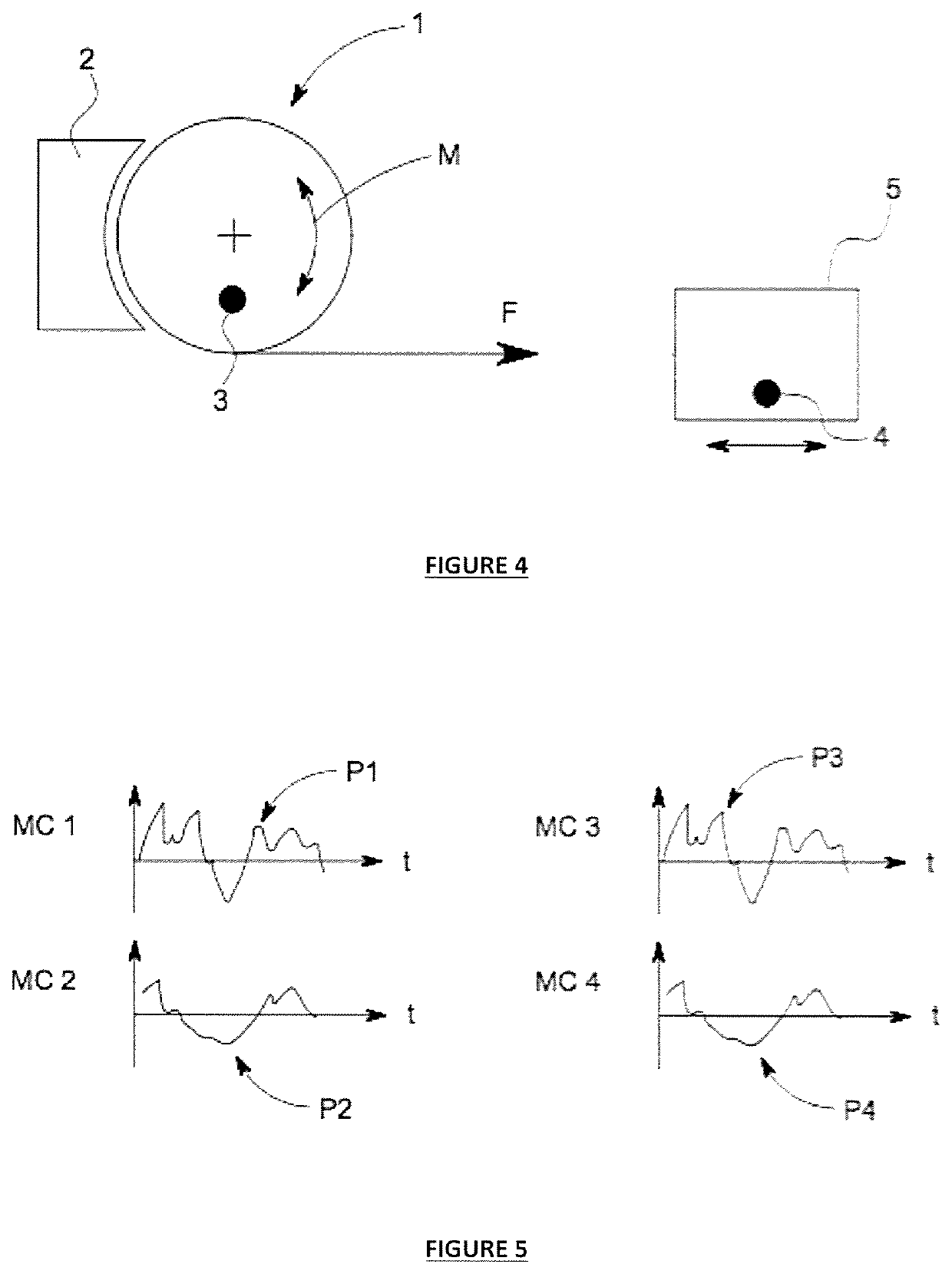Variable behavior control mechanism for a motive system
a behavior control and motive technology, applied in the direction of safety belts, instruments, pedestrian/occupant safety arrangements, etc., can solve problems such as imperfection, achieve the effects of reducing or preventing unwanted activation, increasing functional and application, and great accuracy
- Summary
- Abstract
- Description
- Claims
- Application Information
AI Technical Summary
Benefits of technology
Problems solved by technology
Method used
Image
Examples
working examples
[0170]The above described control mechanism and method of use are now described by reference to specific examples.
example 1
[0171]As noted in the detailed description above, one activation sensing mechanism may sense at least two motion characteristics on a primary system.
[0172]This embodiment is described in more detail below with reference to FIG. 1 which shows a stylized mechanism with a primary system 1, a secondary system 2 and, a force in direction F applied on the primary system 1 that causes motion M of the primary system 1. A sensor 3 may be located on the primary system 1 that measures two motion characteristics.
[0173]FIG. 2 in the upper graph shows a possible profile P1 of the first motion characteristic MC1 as measured over time t on the x-axis and the first motion characteristic measure MC1 on the y-axis, e.g., displacement, force degree and / or direction, acceleration, jerk, velocity and so on. The FIG. 2 bottom graph shows a possible profile P2 of the second motion characteristic MC2 as measured over the same time period, time being on the x-axis, and the second motion characteristic MC2 me...
example 2
[0176]As noted in the detailed description above, one activation sensing mechanism may sense at least two motion characteristics one motion characteristic being directly on the primary system and another at a point remote to the primary system.
[0177]This embodiment is described in more detail below with reference to FIG. 4 which shows a stylized mechanism with a primary system 1, a secondary system 2 and, a force in direction F applied on the primary system 1 that causes motion M of the primary system 1. A first sensor 3 may be located on the primary system 1 that may measure two motion characteristics MC1, MC2 while a second sensor 4 located distal to the primary system 1 and sensor 3 may be located on another object 5, e.g., a person or weight attached distant to the primary system 1 and the second sensor 4 may measure two motion characteristics MC3, MC4 of the person or weight 5.
[0178]FIG. 5 in the left hand graphs show possible profiles P1, P2 sensed by the first sensor of the f...
PUM
 Login to View More
Login to View More Abstract
Description
Claims
Application Information
 Login to View More
Login to View More - R&D
- Intellectual Property
- Life Sciences
- Materials
- Tech Scout
- Unparalleled Data Quality
- Higher Quality Content
- 60% Fewer Hallucinations
Browse by: Latest US Patents, China's latest patents, Technical Efficacy Thesaurus, Application Domain, Technology Topic, Popular Technical Reports.
© 2025 PatSnap. All rights reserved.Legal|Privacy policy|Modern Slavery Act Transparency Statement|Sitemap|About US| Contact US: help@patsnap.com



